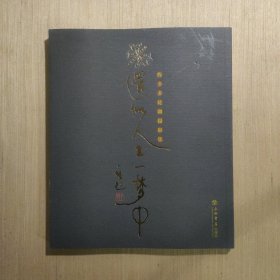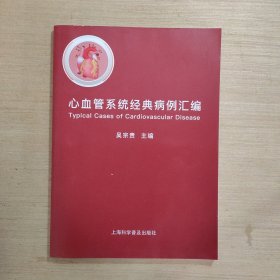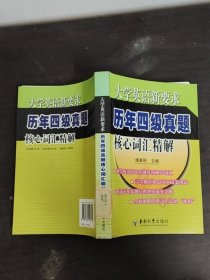
汉语控制的生成语法研究(边角有点水印)
实物拍照,所见即所得,无附带卡片之类。具体品看图,有问题留言。
¥ 5 1.4折 ¥ 35 八品
仅1件
上海奉贤
认证卖家担保交易快速发货售后保障
作者李京廉 著
出版社科学出版社
出版时间2009-01
版次1
装帧精装
货号20-7-9
上书时间2024-12-19
- 店主推荐
- 最新上架
商品详情
- 品相描述:八品
图书标准信息
- 作者 李京廉 著
- 出版社 科学出版社
- 出版时间 2009-01
- 版次 1
- ISBN 9787030225337
- 定价 35.00元
- 装帧 精装
- 开本 16开
- 纸张 胶版纸
- 页数 188页
- 字数 269千字
- 【内容简介】
-
本书在生成语法的原则与参数理论框架内对汉语的控制进行研究,即对汉语空主语PRO的分布和释义进行探讨。
PRO的一般出现在非限定小句的主语位置。由于汉语缺乏显性的形态标记,很多学者认为汉语不存在限定与非限定的区分,因此汉语中不存在空语类PRO。
石毓智(1995a)提出时间一维性原则,这一规则在语言中投影为,如果在同一句子中有多个表示同一时间发生的动词,只有一个动词可以具有与表达时间信息有关的语法特征,其他的动词不能。邢欣(1990,1995)也认为虽然汉语缺乏形态特征,但汉语的动词仍然可以分为动态动词和静态动词两类,能带时间限制词“已经”(包括“已”),“正在”(包括“正”、“在”),“将要”(包括“将”、“要”、“就要”)的动词短语是动态短语,不能带这些限制词的动词短语是静态短语。前者可以带时态助词“着”、“了”、“过”,后者不可以。动态动词动词可以单独做谓语,而静态动词短语不可以。
本文认为虽然汉语在形态上不存在限定与非限定的区分,但它可通过词汇手段标记这一区分,并基于以上观点,尝试性地提出区分限定与非限定的标准:在小句中,能够被体副词(aspectual adverbial)“已经(已)”、“正在(正,在)”和“将要(将)”修饰的动词为限定动词,不能被这些体副词修饰的动词为非限定动词。根据这一标准,汉语中的兼语结构、连动结构、动补结构和动词主语结构中存在限定与非限定的区分。值得注意的是,限定从句跟体状语是可选的,有的限定从句因为主句动词的特性而不能跟体状语,但这并不能否定该从句是限定从句,根据以上标准,汉语的兼语结构、连动结构、动词补语结构和动词主语结构存在限定与非限定的区分,PRO出现这些结构中非限定从句的主语位置。
Claomsky(1981)指出,控制理论涉及许多因素,包括结构因素、动词的内在特性以及其他语义和语用考虑。PRO的释义亦如此。基于Choresky(1981)的思路和Pan(1997,1998)提出的邻近条件和相容条件,本文提出了PRO释义的综合理论:PIO选择最近的相容的NP作它的控制语。如果没有最近的、相容的NP,PRO选择较近的、相容的NP作它的控制语。如果没有其他相容的NP,PRO就受隐性控制或任意控制。
经过验证,PRO释义的综合理论能够较好地解释汉语PRO的释义。 - 【目录】
-
序
Acknowledgements
Abstract
摘要
Abbreviations
Chapter I Introduction
1.1 Control Theory: An Overview
1.1.1 Definitions of Control
1.1.2 Chomsky's Typology of Empty Categories
1.1.3 Basic Questions Concerning Control
1.2 Typology of Control
1.2.1 Obligatory Control Versus Non-obligatory Control
1.2.2 Subject Control Versus Object Control
1.2.3 Split Control Versus Non-split Control
1.2.4 Implicit Control
1.2.5 Landau's (2000) Typology of Control
1.3 Two Generalizations Concerning Control
1.3.1 Bach's Generalization
1.3.2 Visser's Generalization
1.3.3 Intermediate Summary
1.4 The Goal of the Book
1.5 The Organization of the Book
Chapter 2 Major Approaches to the Study of Control: A Critical Review
2.1 The Study of Control Under the Syntactic Approach
2.1.1 The Syntactic Study of Control Under the GB Framework
2.1.1.1 Chomsky's Study of Control Under the GB Framework
2.1.1.2 Manzini's Study of Control Under the GB Framework
2.1.1.3 James Huang's Study of Control in Chinese Under the GB
Framework
2.1.1.4 Battistella's Study of Control in Chinese Under the GB Framework
2.1.2 The Syntactic Study of Control Under the MP Framework
2.1.2.1 Chomsky and Lasnik's Study of Control Under the MP Framework
2.1.2.2 Hornstein's Movement Analysis of Control Under the MP Framework
2.1.2.3 Manzini and Roussou's Study of Control Under the MP Framework
2.1.3 The Syntactic Study of Control Under the Framework of Lexical-Functional Grammar
2.2 The Study of Control Under the Semantic Approach
2.2.1 Thematic Identity Condition and Thematic Distinctness Condition
2.2.2 A Lexical-Thematic Theory of Control in Chinese
2.2.3 Culicover and Wilkins's Coindexing Rule
2.2.4 Sag and Pollard's Controller Assignment Principle
2.3 The Study of Control Under the Pragmatic Approach
2.4 Summary
Chapter 3 The Distinction Between Finiteness and Non-finiteness in Chinese
3.1 Overview
3.2 Proponents of the Finiteness Versus Non-finiteness Distinction in Chinese
3.2.1 James Huang's Arguments for the Finiteness Versus Non-finiteness Distinction in Chinese
3.2.2 Audrey Li's Arguments for the Finiteness Versus Non-finit-eness Distinction in Chinese
3.2.3 Shi Yuzhi's Arguments for the Finiteness Versus Non-finit-eness Distinction in Chinese
3.3 Opponents of the Finiteness Versus Non-finiteness Distinction in Chinese
3.3.1 Xu's Arguments Against the Finiteness Versus Non-finitenessDistinction in Chinese
3.3.2 Yan Huang's Arguments against the Finiteness Versus Non- finiteness Distinction in Chinese
3.3.3 Hu, Pan and Xu's Arguments against the Finiteness Versus Non-finiteness Distinction in Chinese
3.4 Our Arguments for the Distinction Between Finit- eness and Non-finiteness in Chinese
3.4.1 Definitions of Finiteness and Non-finiteness
3.4.1.1 The Definitions of Finiteness and Non-finiteness in a Narrow Sense
3.4.1.2 The Definitions of Finiteness and Non-finiteness in a Broad Sense
3.4.2 A New Criterion for the Distinction Between Finiteness and Non-finiteness in Chinese
3.4.3 The Constructions that Distinguish Finiteness from Non-finiteness in Chinese
3.4.3.1 The Pivotal Construction
3.4.3.2 The Serial Verb Construction
3.4.3.3 The Verbal Complement Construction
3.4.3.4 The Verbal Subject Construction
3.5 Summary
Chapter 4 The Distribution and Interpretation of PRO in Chinese: A Tentative Account
4.1 The Distribution of PRO in Chinese
4.1.1 The Distribution of PRO in the Pivotal Construction
4.1.2 The Distribution of PRO in the Serial Verb Construction
4.1.3 The Distribution of PRO in the Verbal Complement Construction
4.1.4 The Distribution of PRO in the Verbal Subject Construction
4.2 The Interpretation of PRO in Chinese
4.2.1 The Interpretation of PRO in the Pivotal Construction
4.2.2 The Interpretation of PRO in the Serial Verb Construction
4.2.3 The Interpretation of PRO in the Verbal Complement Construction
4.2.4 The Interpretation of PRO in the Verbal Subject Construction-.
4.3 An Integrated Theory for the Interpretation of PRO in Chinese
4.4 Summary
Chapter 5 Conclusions
5.1 Concluding Remarks
5.2 Suggestions for Further Study
Bibliography
点击展开
点击收起
相关推荐
— 没有更多了 —
























以下为对购买帮助不大的评价